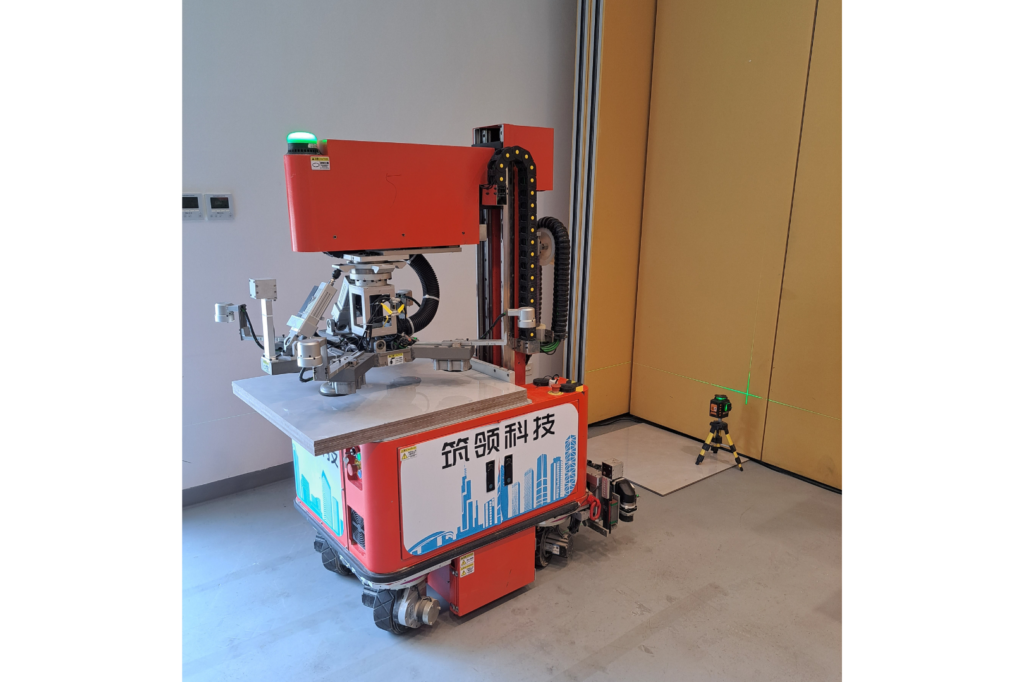The Future of Construction: How Robotics and AI are Revolutionizing the Industry

As an architect, it’s essential to stay informed about the latest advancements in construction technology. Recently, we had the opportunity to attend an exclusive exhibition organized by JTC at the JTC Launchpad in One North, where we witnessed firsthand the groundbreaking innovations in robotics and artificial intelligence that are set to transform the construction industry. These revolutionary machines, presented by various companies, have the potential to significantly improve workers’ well-being, aid in the most challenging tasks, and enhance the overall efficiency of construction projects.
Safety and Wellbeing
Some of the most impressive demonstrations at the exhibition showcased robots capable of performing tasks such as:
- Tiling installation, an activity that can lead in the long term to musculoskeletal disorders, knee problems, respiratory issues and fatigue.
- Rebar binding/tying, with similar problems with the addition of prolonged exposure to heat stress and cutting.
- Drilling floors or ceiling, an essential process for creating holes for anchors and conduits, leading potentially to the hand-arm vibration syndrome (HAVS).
- Plastering and painting, a task often performed at height.
These activities are often considered dangerous and physically demanding for human workers, making the adoption of robotics a welcome change. By delegating these tasks to machines, we can create a safer and more comfortable working environment for construction professionals, ultimately leading to improved job satisfaction and reduced risk of injuries.
In addition to the benefits for worker well-being, the integration of robotics and AI in construction offers several other advantages. For instance, the use of “follow-me” robots, which can move heavy weights, can greatly reduce the physical strain on workers and streamline the transportation of materials on construction sites. This not only saves time but also minimizes the likelihood of accidents caused by human error or fatigue.
Quality and Time
As architects, we have a responsibility to consider not only the design of a building but also the methods and technologies used in its construction, especially with relation to safety but only to that. By incorporating the use of robotics and AI into our specifications, we can ensure that our projects are built using the most advanced and efficient techniques available.
This approach can lead to improved quality control, as machines can perform tasks with greater precision and consistency than humans, resulting in a higher standard of workmanship.
Moreover, the adoption of robotics and AI can significantly increase the speed of construction. Machines can work tirelessly around the clock, without the need for breaks or rest periods, allowing projects to be completed faster and with fewer delays. This increased efficiency can translate into cost savings for clients and a more streamlined construction process overall.
Not all tasks can be performed solely by machines though, and we still appreciate the craftsmanship of a skilled worker in certain areas. Machines, however, will become an indispensable ally bringing on the table incommensurable benefits.
Business models. Is it feasible?
When it comes to the business models surrounding these innovative technologies, there are various options to consider. Some companies may choose to rent out their machines to construction firms, while others may prefer to sell them outright.
As architects, we can play a role in promoting the use of these technologies by specifying their use in our projects and encouraging clients to invest in these cutting-edge solutions. At this point of time, the upfront cost may still look like a barrier for construction companies, especially if there is no economy of scale. However, we do see large contractors starting to invest in these machines and the trend is encouraging.
In the end, numbers have to make sense. Like any new technology, we believe that eventually prices will go down. How soon, it is difficult to say. In the context of Singapore, where materials and manpower costs have been rising dizzily after COVID, there is perhaps the possibility of a steeper upward trend and a more interesting upside from a financial perspective. On top of that, government agencies are very proactive in facilitating the adoption of technology with generous grants and attractive schemes.
The exhibition at JTC Launchpad served as a powerful reminder of the exciting possibilities that robotics and AI bring to the construction industry. As architects, we must embrace these advancements and recognize their potential to revolutionize the way we build.
By staying informed about the latest developments in construction technology and advocating for their adoption, we can contribute to creating a safer, more efficient, and more sustainable built environment.
In conclusion, the integration of robotics and AI in construction is set to have a profound impact on the industry, benefiting workers, architects, and clients alike. As we move towards a future where these technologies become increasingly commonplace, it is our responsibility as architects to stay at the forefront of these advancements and harness their potential to create better buildings and a better future for all.

